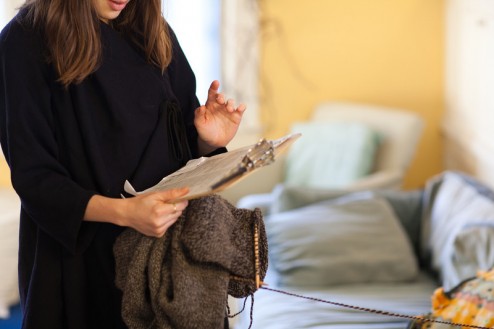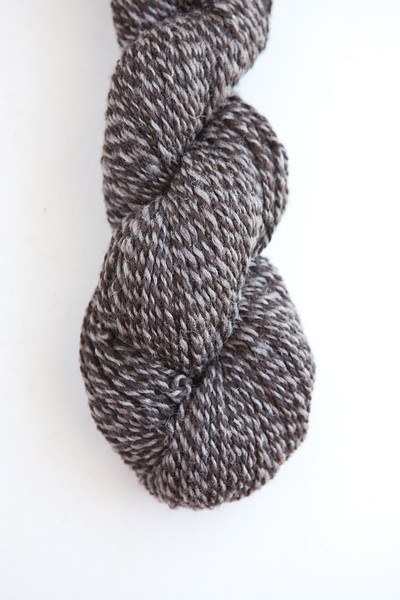Meet Kacy Dapp, a modern day artisan whose life has been consciously crafted to balance the needs of the individual with the reality of the times we live. Her personal passions are carved from a value system of self-sufficiency, community building, and a quest for simplicity.
Weaving, knitting, sewing, spinning, guitar and dyeing are all skills Dapp has explored in increasing and varying depth. Her bicycle is her chosen mode of transportation– unlike the average weekend journeyer, or commute-to-worker… Dapp goes everywhere on her favored two-wheels, including a weekend ride she made through several counties to get to a natural dye workshop.
‘I mostly cycle for the purpose of joyful transportation. The longest distance I’ve gone has been to Big Sur, and although the trip was incredible, I mainly did it because I was in love with my company.’

Dapp grew up in Los Angeles, and moved to San Francisco as a young adult to study. ‘In 2005, I moved to San Francisco to attend SFSU, majoring in apparel design and merchandising.’ Dapp then moved to New York City for an internship and within a short period of time had opened the doors of her first shop.
‘The project of my business, ‘Scales’ is to focus on dimensions. There are many worlds on this Earth in which we can live. Opening the store was an attempt to live naturally and with the community among the industry of New York. The ethos was that it would demonstrate skill and ability within the community, would support local businesses,would be educational and would be an attempt to live in my favorite manner in an urban setting.’
Dapp gave classes in how to construct one’s own clothes, as well as offered ready and handmade goods, ‘I offered free workshops. I did and do not want commerce to mean commercialism.’ Down to the very nails, the store was constructed with local materials and local labor.
Dapp returned to the Bay Area in July of 2010 to continue to develop her skills and her life as a whole, ‘I am not as interested in mastering anything as much as I am in acquiring a foundation upon which to live sustainably and with self-reliance. I live seeking splendor, which translates for me into thriving, being without fear, and making contributions. In so far as “mastering” sewing, I have been working on building a complete wardrobe and pairing down and cleaning up my patterns to be easily replicated with simple stitches and seams.’
Dapp’s quest for a complete and paired down wardrobe was a perfect match for the Fibershed project. ‘When I realized the scope of the Fibershed project, I knew I wanted to take part not just because of the clothing, but because of the community and how the project is bound to the Earth.’
As we constructed the year’s clothing from our local fibers and dye plants, we were managing our resources with extreme care, there were only so many available skilled hands– and each pair of them needed to be focused on ‘just the right pieces’. At the point at which Dapp became involved, the need for a specialized wool shirt was becoming increasingly more evident– and not just any wool top, but one that could function as an insulating base layer.
In Dapp’s characteristic positive and generous way, she took on the challenge of a fitted wool base-layer, without hesitation.

Dapp was paired with Solano County Rancher, Robin Lynde, who runs a flock of Jacob’s sheep in California’s Central Valley. The two met at a Lambtown natural dye event that Robin generously hosted on her land, (this was the same dye event that Dapp rode for two days to get too!). Lynde has a long history of not only raising her sheep, but in processing and weaving their wool. She is also famed for playing a large role in her region’s agricultural community. This combination of artisan and farmer all in one, seemed like a natural match for Dapp’s Renaissance-woman skill base. The two have a lot in common.

As the day closed on the original natural dye event where Dapp, Lynde and I were all present… so many months ago, the discussion of including Dapp’s knitting skills into the Fibershed project were just taking hold– it seemed like the best way to get moving on the collaboration was to take a look at the yarns that were right there at the farm…. so Dapp and myself made a journey into Lynde’s studio to check out her range of raw materials.
Lynde’s heirloom herd, with their modeled black and white fleeces create some of the most uniquely beautiful spun yarns– the echos of the black and white spots appear as a speckled gray to the onlooker. It was this strong patterning, and perfect softness that drew Dapp and I to settle on these raw materials.

As knitter and farmer shook hands, (so to speak), the yarns were passed from their source at the farm, to Dapp, and her Oakland studio, a short distance of 53 miles. In their new home, they would be recreated into a wearable garment with Dapp’s knitting needles.
Dapp describes her relationship with the process, ‘Knitting is euphoric. It feels endless and what better way to live and end a life?! There is rhythm and power in the action. One essentially makes fabric for most uses in a portable, social, practical, natural, creative and simple manner. There will always be something else to make as it will wear out or need darning. It has reinvented my concept of time that I’ve applied to many areas of my life.”

Dapp combined the idea of a shirt with that of a sweater, drawing from multiple inspirations– including the wisdom of knitting legend Elizabeth Zimmerman. The length was carefully constructed to be long enough to fit over the waist and to the base of the hips– an important characteristic of a cool-weather garment, which you need to cover your midsection even as you bend and twist.

This is the type of garment that you want with you at all times….you can wear it under a larger coat or sweater, or it can function on its own. It exudes function and beauty at every level.

When Dapp was asked what changes had occurred for her during her work on this garment, her response was one of transformation.
‘Through working with Fibershed, I recently had the epiphany that I don’t necessarily need the materials I initially envision for a project. There are an abundance of ways to complete a project and I’d rather look at what’s available rather than what I desire as the process of completion is just as exciting as the finished piece if I allow it to be. I also love the reassociation with clothing that the project gives me.
I cherish that I have the opportunity to buy groceries at the farmer’s market each week and I know who grew my oranges and broccoli but I never met the people involved with my waxed cotton jacket. When I knit with a friend’s wool the project and how I care for it afterwards takes on a new dimension. Clothing and the things we buy should be more approachable. My initial hesitation over working with Fibershed was that the idea was farfetched or disconnected from reality when actually the community, culture and resources were already there waiting to be pieced. This is often the case.’

When Dapp was asked what her future would look like with Fibershed, she responded, ‘It would be satisfying to expand upon the idea of the multifunctional knitted shirt/sweater and make more garments that easily transform (ie: a jacket that becomes a bag).”
She also suggested how the project could encapsulate a whole life approach, ‘Ideas for the future would be to consider recycling materials, food and shelter in the paradigm as that would make a complete circle. I’d also love to discuss the animals involved and how they can be treated to ensure the project is not only healthy for people, but for the land and the animals themselves.
I am intrigued by the Nicasio Grass Ranch (carbon sequestering ranch), and the role it plays in harmony and sustainability. The Fibershed project has created open space for me, physically and cognitively. Having grown up in suburban and urban settings, I rarely saw farmland except along the highway which didn’t seem appealing. With space and the outdoors as being part of a community, so much becomes a possibility. This has made a great impression on me and now I sleep better outside or when the window is open.’

Thank you Kacy, Robin, Paige, and the many Jacob’s sheep who lent their efforts to the creation and documentation of this story… and this garment.



